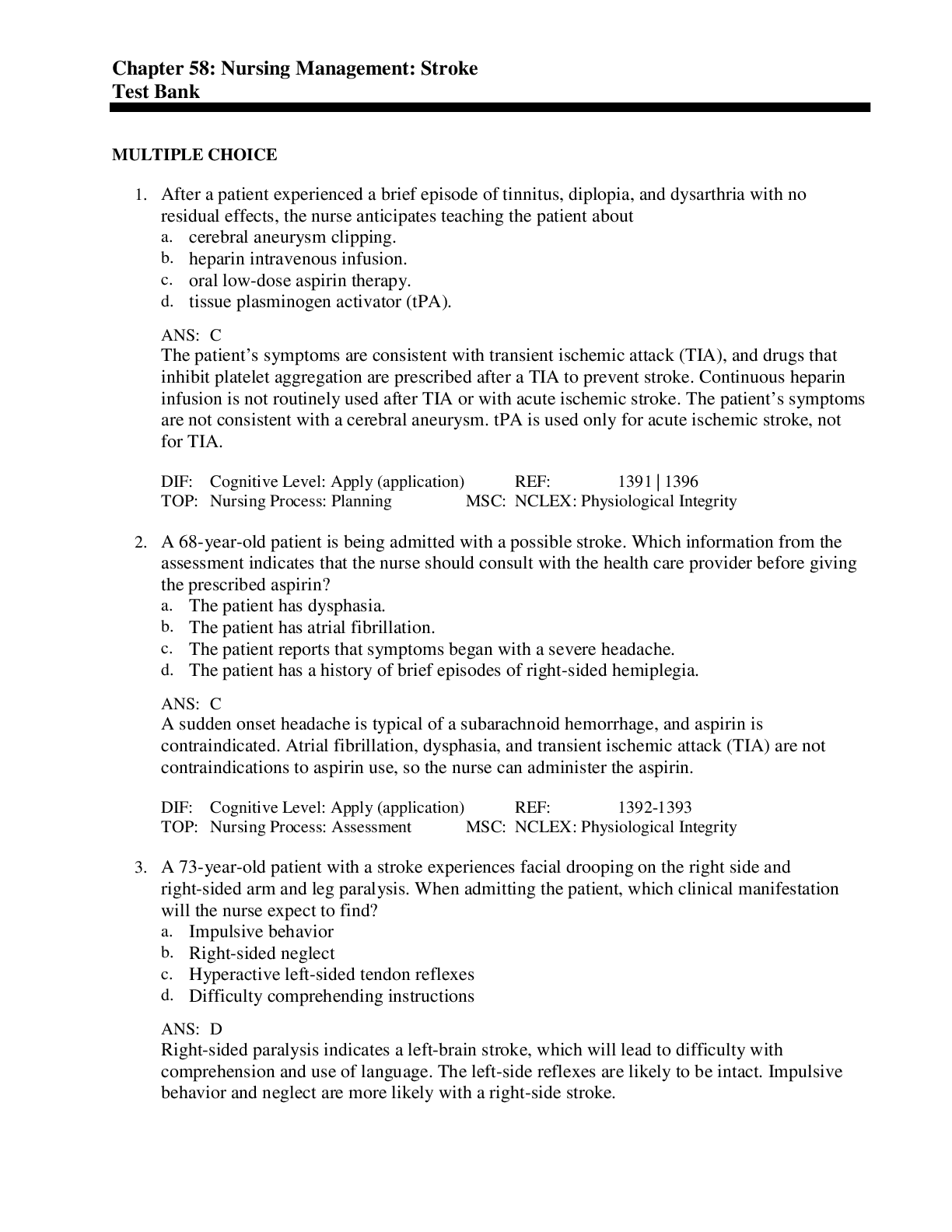Nursing Management: Stroke Test Bank (chapter 58)
Course
Project Management
Subject
Chemistry
Category
Questions and Answers
Pages
11
Uploaded By
ATIPROS
Preview 4 out of 11 Pages


Download all 11 pages for $ 8.00
Reviews (0)
$8.00
